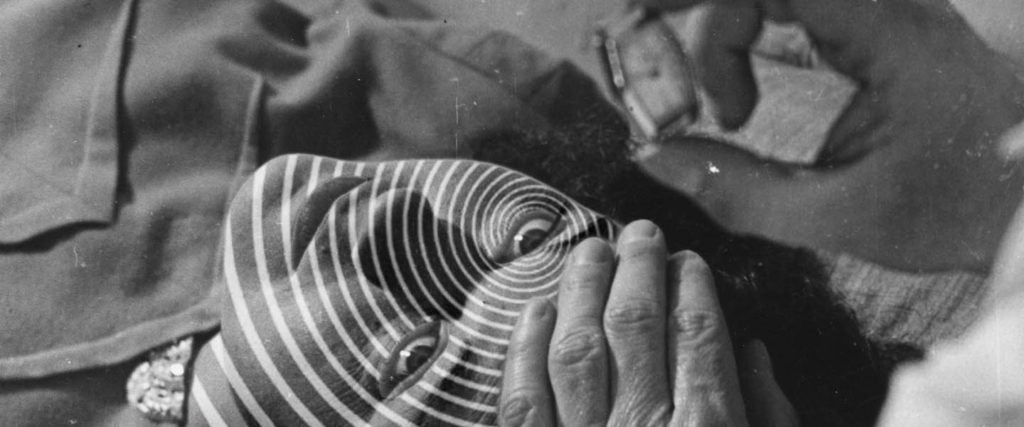As a nurse practitioner who has worked in health care for more than a decade, Christina Hagood is well acquainted with stress, but in 2018, her job became just too much. “There were a lot of sleepless nights, and honestly, my husband was afraid to ask me how my day was until I’d had a glass of wine,” she tells me.
She tried changing jobs and took up mindfulness exercises and meditation, but still, nothing worked. Then she listened to the podcast Manifest This and learned about a form of hypnosis that involves uncovering memories from past lives. Despite her scientific training, she decided to try past-life regression therapy (PLR) because she didn’t know what else to do.
PLR is similar to an intense guided meditation session. The hypnotist takes a person through a relaxation exercise, known as induction, followed by a hypnotic exercise directed at a certain topic. “Hypnosis gets a bad reputation because of the way it’s portrayed in movies like Get Out, where it’s shown as a form of mind-control, which couldn’t be further from the truth,” Hagood explains.
Although Hagood’s goal was to cope with her career disenchantment, she found herself in another realm — living as a boy in the 1800s. She was very poor but surrounded by love, a reminder of the importance of family. In a subsequent session, Hagood was a caretaker, who spent so much time serving others that she became too exhausted to care for herself. “It served as a reminder of what’s important in this life — service to others requires balance,” she says.
The belief that unresolved issues from past lives can stay with us dates back to the second century B.C. and the idea of reincarnation. But PLR didn’t gain widespread attention until 1952 when a Colorado housewife named Virginia Tighe claimed she was a 19th century Irish woman named Bridey Murphy. (The story gained national attention and was turned into a book and movie). Further bolstered by the rise of the self-help industry in the 1960s and 1970s — and endorsed by medical professionals like Yale-trained psychiatrist Brian Weiss in the 1980s — PLR remains one of 10 types of hypnotherapy available to people.
If anything, thanks to the stressors of quarantine, hypnotists like Eli Bliliuos have found that PLR is only becoming more popular. “Interest has definitely increased recently,” Bliliuos tells me. “Probably due to the pandemic as well as the mainstream exposure it’s had as of late.”
That’s great news for Hagood, whose personal experience with past-life regression therapy led to the next chapter in her career — becoming a certified hypnotist who practices PLR. It was a controversial move for a health-care worker, as PLR isn’t supported by credible psychological or medical associations.
There used to be more ambiguity about whether or not certain forms of hypnosis are therapeutic, until August 2005 when the American Psychological Association (APA) officially adopted an evidence-based policy (something the medical community did decades earlier). This means that anything considered therapy has to be demonstrated consistently through peer-reviewed scientific studies.
Numerous techniques like cognitive behavioral therapy fit the bill, but PLR doesn’t. Instead, claims of PLR’s efficacy rely more on intuition — i.e., many people feel like this type of hypnosis works for them, but they can’t explain why. While the end goal of PLR is to identify unhelpful patterns and take steps to change them, without any research to back it up, it’s generally considered unethical for therapists and psychologists to practice it. According to its critics, PLR’s main risk is that it can create false memories, mainly through a combination of suggestions from the hypnotist and distorted memories from movies, books, history and other media.
In the past, false memories are typically associated with another form of hypnosis, recovered memory therapy, which came to prominence in the 1990s and resulted in a number of high-profile lawsuits over implanting false memories of abuse. This led to an overcorrection that all repressed memories were a myth, a fallacy that’s been used to discredit abuse survivors. The APA has since landed in the middle, acknowledging that repressed memories can occur in trauma survivors — a condition known as dissociative amnesia — but clinicians cannot verify claims without additional corroborating evidence.
For Paul Greene, director of the Manhattan Center for Cognitive-Behavioral Therapy, without data behind PLR, we don’t know what it can do to people, and thus, clients cannot provide informed consent. “Perhaps more damaging than believing a false memory is erroneously believing that therapies without evidential bases are viable options for real health-care needs,” he explains. “For this reason alone, PLR shouldn’t be administered by ethical and conscientious providers.”
Hagood concedes that there are limitations when it comes to proving the efficacy of PLR. “How can we prove these experiences are real and not made up?” she asks. “We can’t and may never be able to.” Though many PLR practitioners refer to the process as “past-life regression therapy,” Hagood makes a conscious effort to avoid the T-word, always referring to it as hypnosis. She also avoids words like “treat” and “cure,” and requires referrals for clients being treated for mental-health issues, in order to make sure it’s safe.
Regardless, Hagood believes PLR helps people draw similar conclusions as they do in therapy, especially for those who’ve struggled with looking inward in the same way she once did. “Our brains process information through the filter of our belief systems, so it’s possible that these experiences aren’t residue from past lives, but instead are metaphors to help clients better understand situations,” Hagood says. “Whether or not PLR is real, it can be a profound experience for some and help them live a fuller, happier life.”
If Hagood has to take a trip to the 17th century to get people there, so be it.

